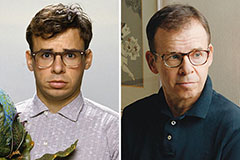In the rich tapestry of Ethiopian culture, the equilateral cross holds a place of profound meaning. This ancient symbol is more than just a geometric shape; it represents the unity of the Ethiopian people and their unwavering faith.
The equilateral cross can be seen in a variety of contexts, from historic churches to modern-day homes. It is often embellished with intricate designs and vibrant colors, showcasing the artistic brilliance of Ethiopian artisans.
Within history, the equilateral cross has served as a powerful icon of Ethiopia's cultural heritage and its enduring resilience. It is a source of pride for Ethiopians both at home and abroad.
Unveiling the Ancient Mystery: The Plus Sign and Ethiopian Religion
In the deep terrains of Ethiopia, a striking symbol has captivated scholars for centuries. The plus sign| appears in numerous contexts, from sacred sites to artifacts, hinting at a powerful meaning woven into the very fabric of Ethiopian religion. This enigmatic symbol, often viewed as a representation of divine power, possesses secrets that may shed illumination on the foundations of Ethiopian customs.
Stone, Soul, and the Cross: Symbolism in Pre-Christian Ethiopia
Within the ancient lands of Ethiopia, long before the arrival of Christianity, a rich tapestry of symbolism intertwined with everyday life. Minerals held immense significance, serving as conduits for spiritual power and reminders of ancestral Knowledge. The concept of Soul permeated their beliefs, manifested in sacred rituals and intricate carvings that adorned temples and monuments. While the Christian cross later became a dominant symbol, traces of pre-Christian beliefs lingered, reflected in Distinct interpretations of the cross as a representation of life's journey or the convergence of earthly and celestial realms.
From Greece to God's Own Land: The Sacred Greek Cross in Ethiopian Architecture
Tracing its roots back to the ancient society of Greece, the Greek cross has travelled across continents, finding a sacred home in the architectural scenery of Ethiopia. This representation of faith, characterized by its equal arms radiating from a central point, holds deep importance in Ethiopian Christianity.
Represented in countless churches and monasteries, the Greek cross decorations the walls, ceilings, and altars, serving as a constant testament to the enduring impact of this ancient symbol. Its manifestation in Ethiopian architecture speaks volumes about the relationship between cultural exchange and religious piety.
The influence of the Greek cross can be observed in various architectural designs, from the grand cathedrals to the modest village churches. It is a evidence to the rich history and cultural diversity of Ethiopia, where ancient traditions fuse with contemporary life.
The Equal-Armed Cross: A Bridge Between Past and Present in Ethiopia
The equal-armed cross stands as a striking symbol in Ethiopian culture, representing a check here profound connection to both the ancient times and the present. Its history trace through millennia, reflecting ancient beliefs and cultural values.
Additionally, this unique cross acts as a bridge between generations, sharing cultural knowledge and strengtheningcohesion within Ethiopian people.
Ethiopia's Enduring Legacy: The Importance of the Cross Through Time
In Ethiopia, the cross holds a profound and historical significance, deeply embedded in the nation's spiritual fabric. From its early emergence as a symbol of conviction, it has developed into a potent emblem of Ethiopian identity and legacy.
The cross stands as a reminder to the enduring influence of Christianity in Ethiopia, shaping its narrative and continuing to inspire generations. Its presence can be seen in numerous cathedrals, intricately adorned with artistic designs that display the nation's rich imagination.
Beyond its religious context, the cross also signifies unity and solidarity among Ethiopians. It serves as a strong unifier, transcending differences and fostering a shared sense of community.
 Rick Moranis Then & Now!
Rick Moranis Then & Now! Lark Voorhies Then & Now!
Lark Voorhies Then & Now! Mason Gamble Then & Now!
Mason Gamble Then & Now! Gia Lopez Then & Now!
Gia Lopez Then & Now! Heather Locklear Then & Now!
Heather Locklear Then & Now!